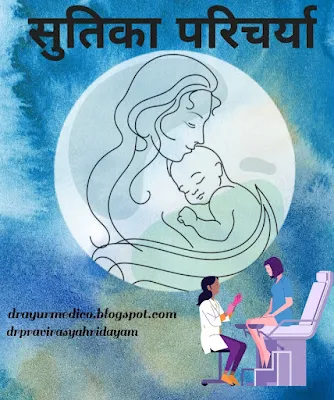April 11th is known for NATIONAL SAFE MOTHERHOOD DAY. Every year, this day focuses on the safety and welfare of the young mothers as well as expecting mothers. 'National Safe Motherhood Day' is observed on birth occasion of Kasturba, wife of Mahatma Gandhi. Janani Suraksha Yojana (JSY) is an initiative by the Government of India for reducing the neonatal and maternal mortality rate. On this occasion, I would like to discuss about Soothika Paricharya. What are the management of Soothika in Ayurveda?
As per Ayurveda, a woman after the expulsion of the Garbha and placenta is known as SOOTHIKA.
As per Acharya Susrutha and Acharya Vagbhatta- Care of the young mothers is till 6 weeks, which corresponds to the Modern post natal care period.
While Acharya Vagbhatta mentioned it to be one and a half month or till the commencement of the menstruation.
WHAT ARE THE POST NATAL CARE AS PER OUR ACHARYA- SOOTHIKA PARICHARYA?
Child birth is an crucial stage during motherhood. After care of the mother is also very essential and It stands equal importance as the pregnancy stage. Many of us might be thinking, Is there any postnatal care in ayurveda? Is it necessary to do Soothika Paricharya? Is this Care plan beneficial or effective? Does this care plan have any side effects?
Let us see. There are Postnatal care mentioned and practiced in Ayurveda. Regarding the question about necessity of Soothika Paricharya- Well! It is very healthy to do the postnatal management care, as the lady in labour undergoes Vata Prakopa and in later stages the women may suffer from Post partum depression - commonly seen nowadays. The therapeutic procedures and diet regimens mentioned in Classical Ayurveda helps in subsiding the vata prakopa. Hence Soothika Paricharya is necessary, beneficial and will surely be effective. As this procedure involves Shamana chikitsa, there won't be adverse effects nor complications.
- Abyanga with bala tailm.
- Prisheka or kashayapana with vatahara drugs
- Sneha yuktha yavagu/ ksheera yavagu which is processed with vidarigandhadhi gana from the 3rd day of delivery for 3 days.
- If the women is contra-indicated to Sneha then kashaya of vatahara drugs or lagupanchamoola are advised.
- Intake of meat soup processed with yava, kola, kulatha, shali as per the condition.
- Udara abyanga
- Chatursneha processed with panchaloka choorna- if mother is hungry
- Using rakshogna dravya for protection of the new-born and the young mother.
- Doopanam with ghrita processed with kusha, guggulu, agar
- Arishta- jeerakarishtam, dasamoolarishtam, ashokarishtam and gutika sevana- dhanwantara gutika according to the condition
- Lehya sevana- thengin pookkula, shatavari gulam
- Udara veshtana ( bandaging of abdomen )- for tightening the abdominal muscles and to alleviate the vata prakopa.
- Vettu kuli- bath with water processed with leaves having vatahara properties ( guava leaf, ripened pappaya leaf, mango leaf, turmeric leaf etc.)
- Ushana udaka pariseka is also recommended to alleviate the dushtaraktha
- Boiled and cooled water should be given to drink.
- Acharya Susrutha have mentioned that some women will have doshas or raktha left inside the uterus, unexpelled after the delivery, do in such patients shodhana chikitasa to be done by giving curna of pippalimula, citraka, sringavera mixed with lukewarm jaggery water for 2-3 days. This is done to expel the vitiated doshas and raktha.
- Our Achayas have mentioned treatment regimens as per desha (place/habitat), the physician considering the desha should advise the therapies as per the individual condition and habitat.
- Soothika should be refrained from Psychological factors like anger, heavy exercise, coitus or exertion.
- Make sure the soothika doesn't over-weight and maintain an normal balanced weight.
Enjoyed this post? Never miss out on future posts by following to https://follow.it/drpravirasyahridayam?leanpub.





Comments
Post a Comment